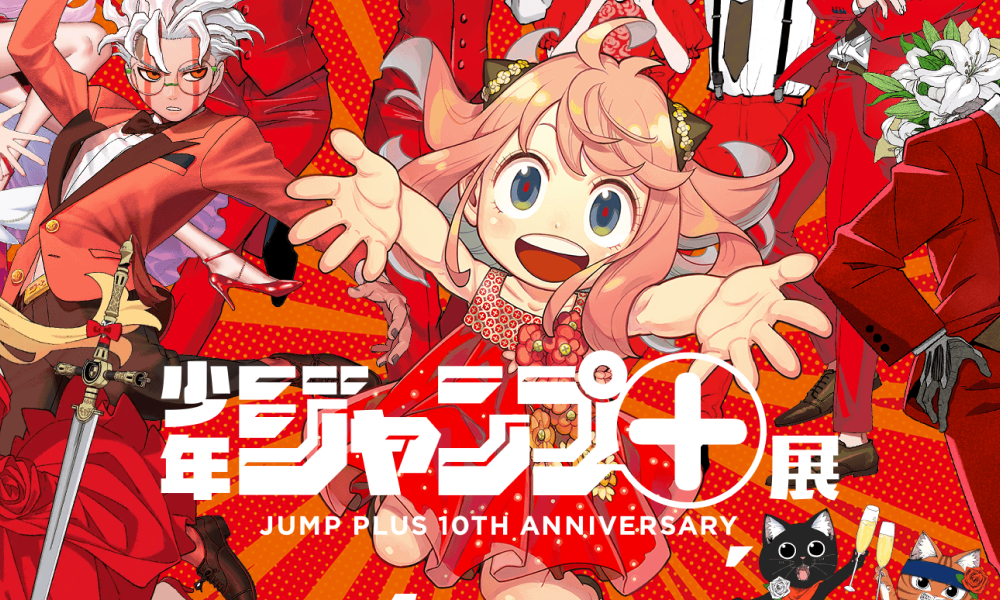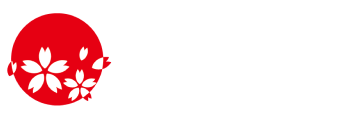Japanese Denim is considered to be the best in the world among denim enthusiasts, But when you think about jeans, you don’t think about Japan.
You probably think of Levi’s or Lee. Classic American brands, just something comfortable to throw on each day. But denim heads know there’s more beneath the surface, especially when it comes to Japanese denim.
Japanese denim has created a passionate global following. I myself am not only an anime and manga fan; but a huge denim fan, so I know a little about Japanese Denim.
Brief History of Denim
Denim originally comes from Europe, specifically Nîmes, France. The word denim comes from ‘de Nîmes’, meaning ‘from Nîmes’. Decades later, jeans exploded in popularity globally, becoming symbols of freedom, rebellion, and casual cool.
Denim in Japan
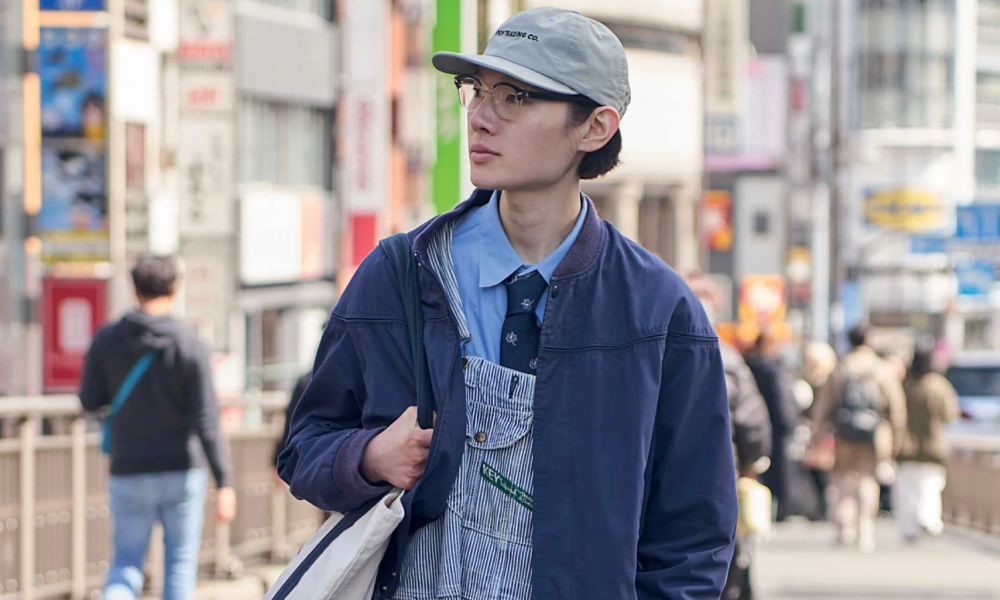
But here’s where Japan steps into the picture. In the 1950s, American pop culture invaded Japan. Everything from rock ‘n’ roll, Hollywood films, and of course, denim. Enthusiastic, stylish Japanese youth became obsessed with Americana, especially authentic, vintage-style jeans.
Amekaji is the word for this obsession among the Japanese.
While American brands modernized their production methods, Japan went in the opposite direction. Denim makers in Japan decided to preserve and perfect traditional techniques, making jeans the old-fashioned way.
Why is Japanese Denim Special?
Japanese denim stands apart mainly because of how it’s made. Instead of mass-producing jeans quickly, Japanese makers take a slower, more meticulous approach. This method involves using old shuttle looms, slower weaving techniques, and higher-quality cotton. A more traditional denim manufacturing way.
They aim for perfection over speed, focusing intensely on craftsmanship, detail, and tradition. These jeans aren’t mass-produced. They’re limited, special, and designed to age beautifully with every wear.
Selvedge Denim
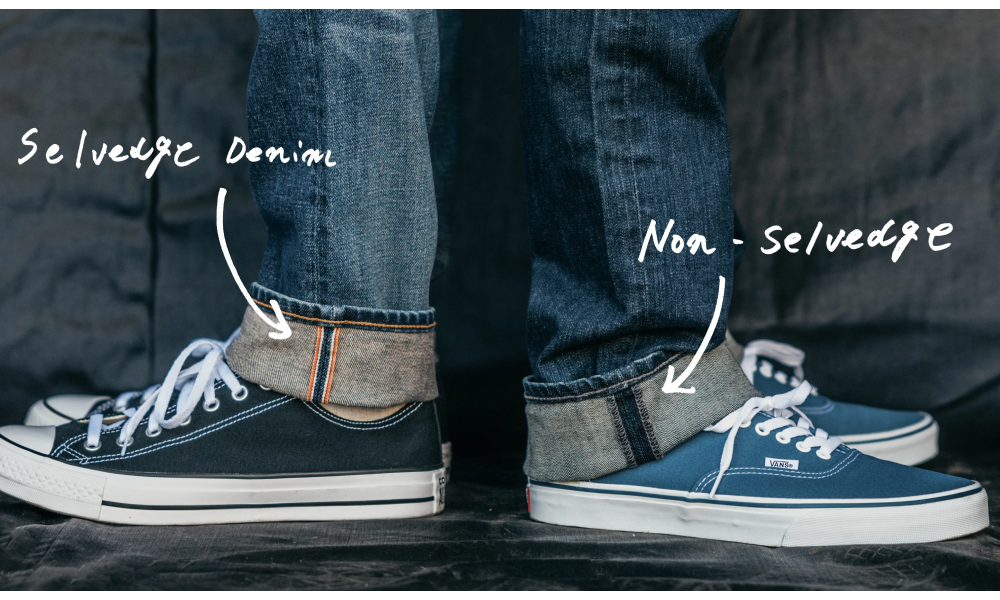
You might’ve heard the term “selvedge denim” thrown around, especially if you’ve dipped your toes into the denim rabbit hole.
Selvedge refers to denim woven on old school shuttle looms, which produce narrower rolls of denim with tightly woven, clean edges.
These edges aren’t just decorative. They help prevent fraying, increase durability, and indicate superior craftsmanship. The visual hallmark of selvedge denim is the colored thread woven into the denim’s edge. Usually red, white, or pink; giving jeans that distinctive rolled-up cuff look.
Japanese manufacturers prefer these antique shuttle looms for their quirks. These machines produce slight irregularities, creating denim with unique textures. Modern industrial looms aim for consistency, but Japanese makers cherish imperfections because they give jeans individuality and soul.
Japanese Denim Uses Natural Indigo
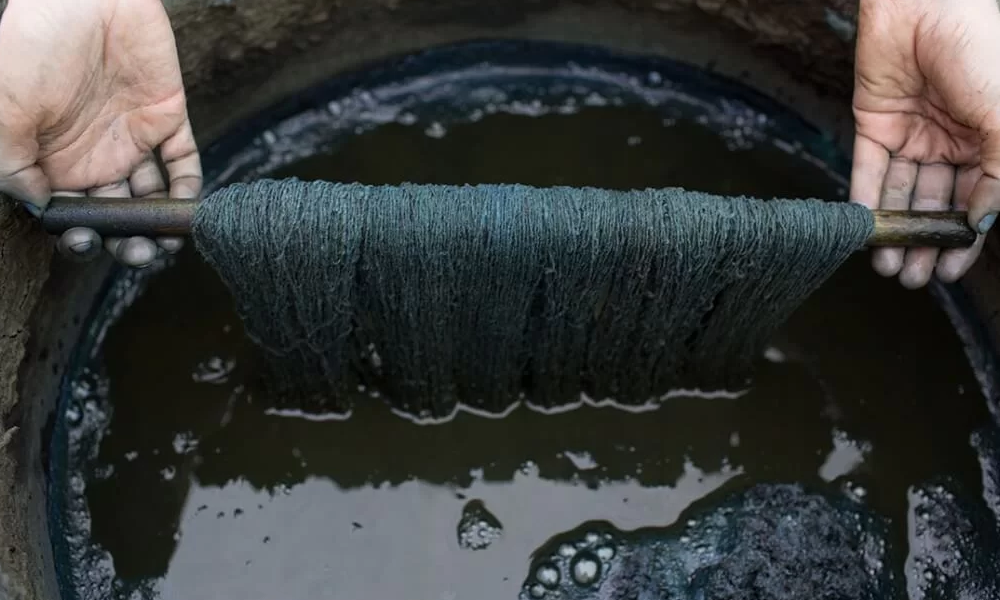
When we discuss Japanese denim, we can’t ignore indigo. The magical dye that turns cotton threads into denim. But Japanese denim makers don’t settle for synthetic dyes; they often choose natural indigo.
Natural indigo dyeing is a slow, artisanal process that results in deeper, richer shades of blue. These colors evolve beautifully over time, fading gracefully with every wear, creating unique patterns that reflect your lifestyle.
And there’s something captivating about the fading process. Each pair of jeans becomes truly unique, making them not just clothes but a personal narrative.
A Culture of Craftsmanship
Japan’s obsession with quality isn’t just about producing jeans. It’s about mastering the art of denim. This commitment to excellence is rooted deeply in Japanese culture. There’s a term in Japanese called kodawari, meaning the relentless pursuit of perfection. Japanese denim manufacturers embody this concept fully.
Companies like Momotaro, Iron Heart, Pure Blue Japan, and Samurai Jeans have built their brands around meticulous attention to detail. These artisans carefully select cotton, obsess over dyes, stitch meticulously, and carefully inspect each piece. To them, denim isn’t just fabric; it’s their craft, pride, and heritage.
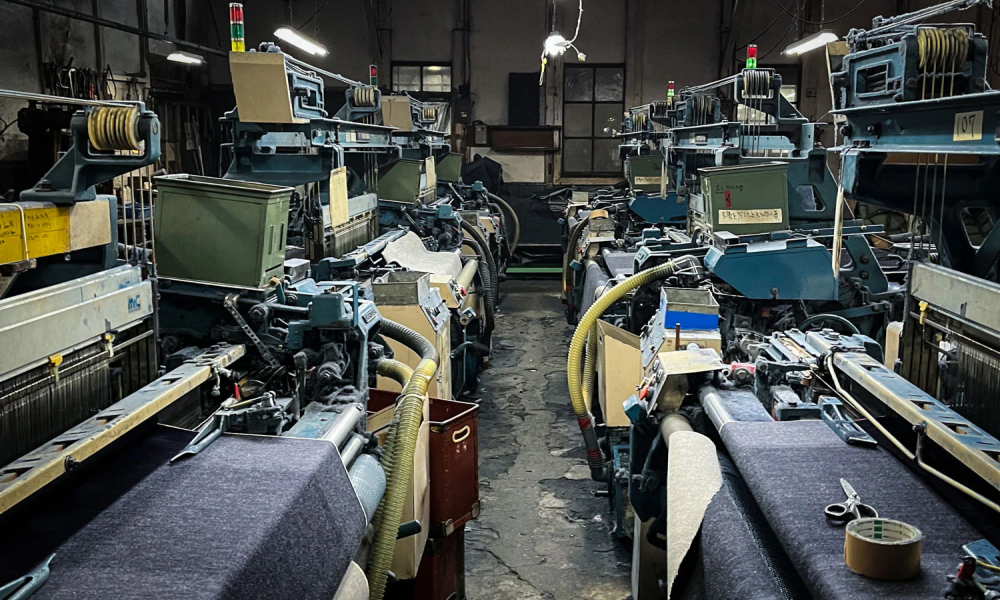
Is Japanese Denim Worth Their Price?
Now, let’s address the elephant in the room: price. Japanese denim jeans typically cost significantly more than your average pair of jeans. It’s not unusual for a pair of high-quality Japanese denim jeans to set you back anywhere from $200 to well over $500. You might be thinking, “Are they really worth that?”
Yes, they actually are. Here’s why:
With Japanese selvedge denim, you’re paying for more than just jeans. You’re investing in craftsmanship and durability. These jeans last a long time, sometimes decades, improving with age. Your $200 jeans today can become your trusted pair tomorrow, and they’ll probably outlast any pair of regular jeans you would’ve bought in that same timeframe.
The Denim Head Community
Buying Japanese denim isn’t only about owning a durable pair of pants, it’s about joining a community. Denim enthusiasts form communities around their passion for anything denim.
They discuss fades, compare their jeans’ evolution, and share advice on denim care. Online forums, Instagram pages, and meetup events worldwide celebrate these jeans, creating friendships and bonds through shared appreciation.
Plus, wearing Japanese denim is stylish. It shows you’re someone who appreciates quality, craftsmanship, and authenticity. Whether paired with sneakers and a tee or dressed up with a blazer, Japanese denim always stands out subtly, stylishly, and unmistakably.
Japanese denim, or even selvedge denim, is something only denim heads will understand. It’s a ‘if you know you know’ situation.
What are the Best Japanese Denim Brands?
The Osaka Five: Studio D’Artisan, Denime, Evisu, Warehouse & Co., FULLCOUNT
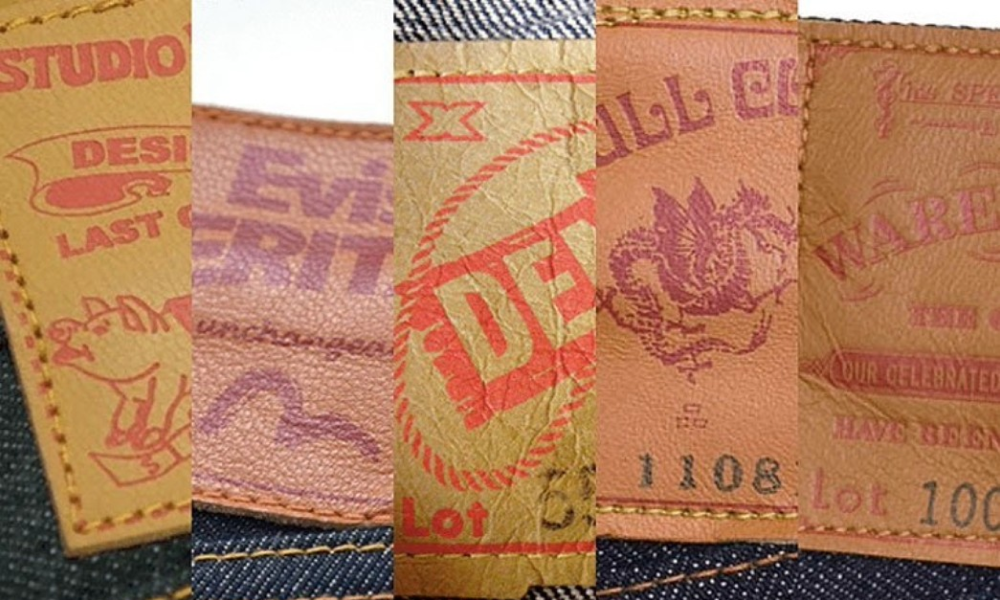
These five pioneered the Japanese Denim fad back in the 80’s. The owners were all fans of the Amekaji style, and were obsessed with American jeans.
Mikiharu Tsujita and Hidehiko Yamane, two employees of a fashion store in Osaka, loved Levi’s. They decided to create their own jeans. Tsujita started FULLCOUNT, while Yamane started Evisu.
Samurai Jeans
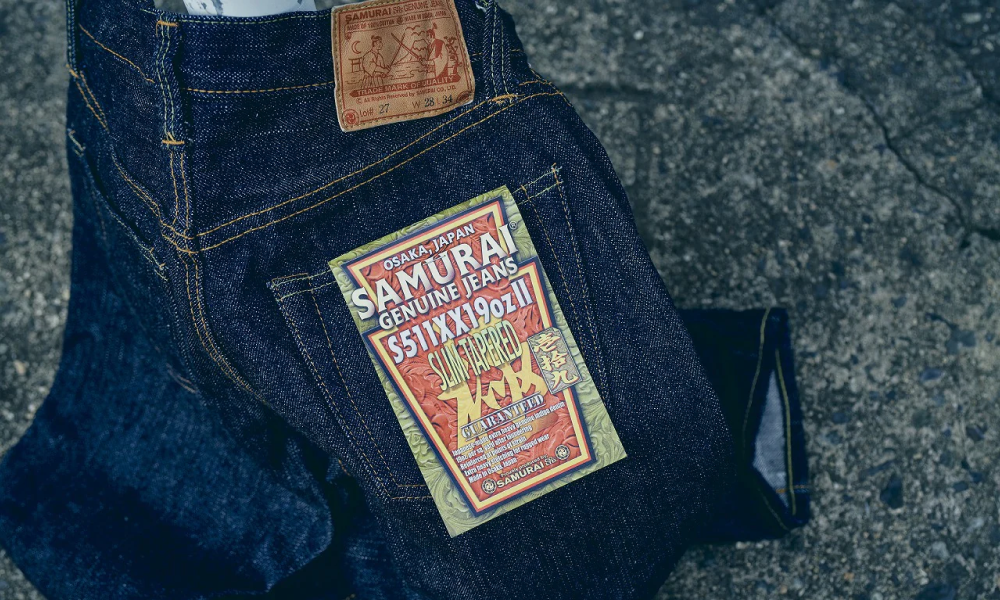
Also started in Osaka in the 90’s. Samurai were a latecomer in the Japanese denim world. Just like the Osaka Five they were inspired by Levi’s. Their first pair of jeans, the 510, was named after the Levi 501’s.
Samurai is one of the first Japanese denim brands to experiment with different fabric weights. A typical denim jean would be around 11-14 ounces. But Samurai experimented with 17, 18, 21, ounces. They created a unique brand for themselves.
This is the pair of Japanese denim I have. I’ve had it for almost a year and a half at this point. It’s on the heavier side, 17oz. But it’s one of my favourite pairs of jeans I own.
Oni Denim
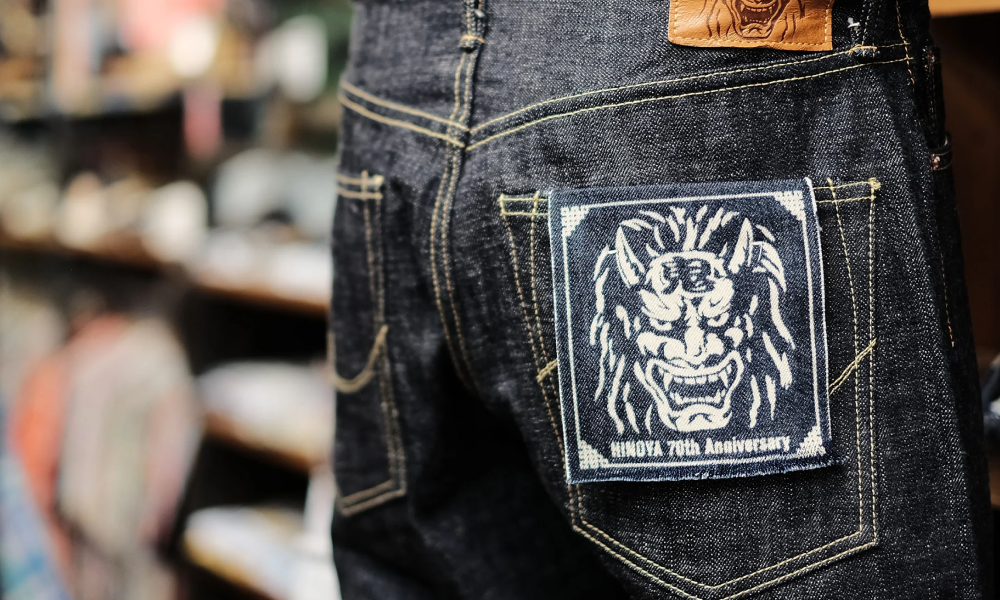
There’s actually not much known about the behind the scenes of Oni Denim.
Legend has it that founder Masao Oishi was the only one who made jeans back in the day for the brand. So for a few months a year he would work and weave jeans.
It’s probably not like that now, but Oni Denim don’t have their own website. They never advertise, they rely on word of mouth. Which in this day and age would probably not work for 99.9% of brands.
But Oni Denim is that 0.01%. They are well known in the denim community, despite not doing any advertising themselves. They’re products speak for themselves.
Naked and Famous
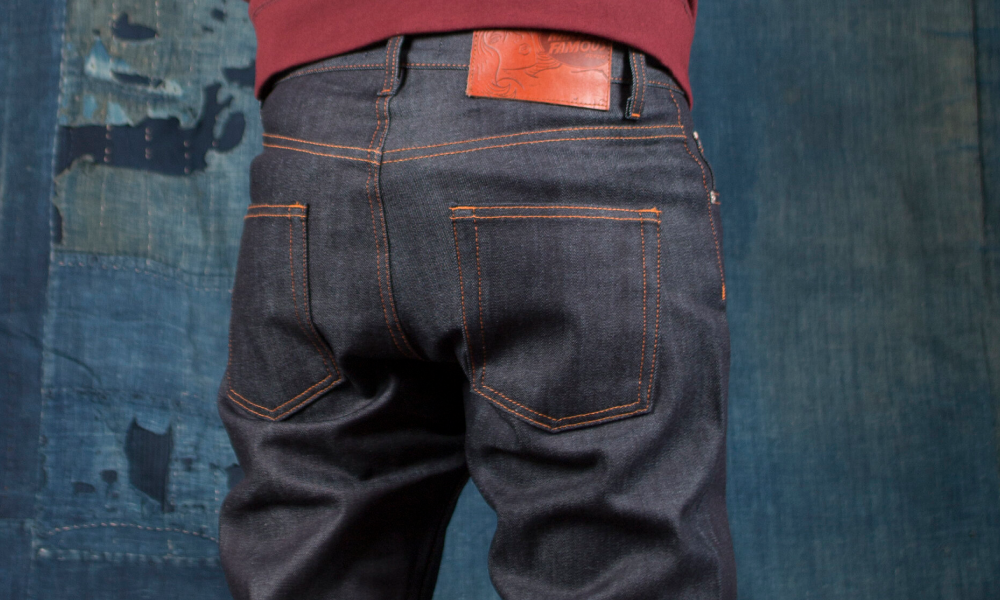
Naked and Famous is actually a brand from Canada. However, their quality jeans match some Japanese denim brands. They’re well known as a brand that loves to experiment with their jeans.
Different colours, textures, materials. I’m sure if you’ve thought about it, they’ve probably made it at some point.
Levi’s
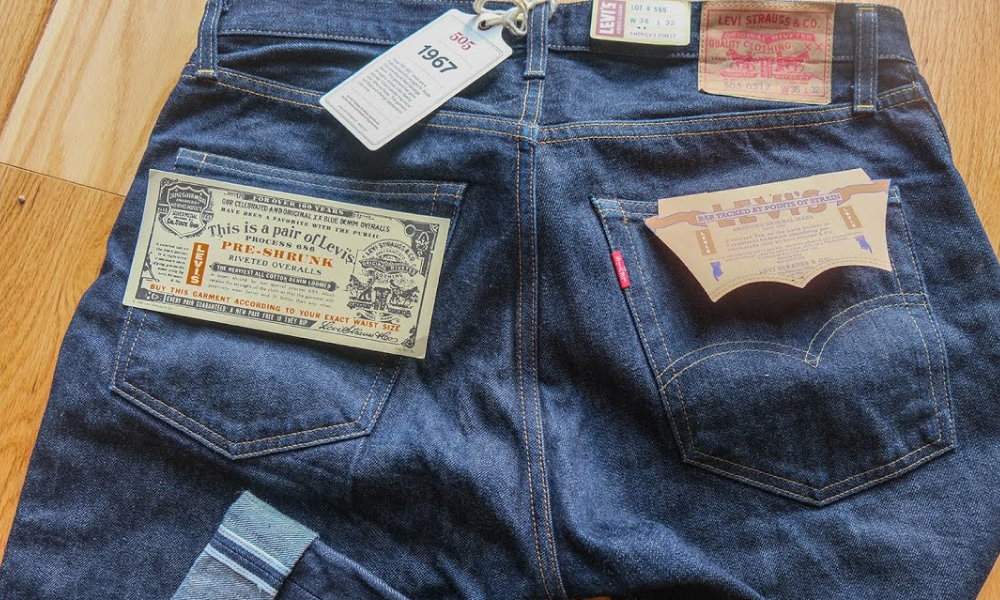
Levi’s has a sub-brand called Levi’s Vintage Clothing. They recreate 40’s and 50’s American Jeans with modern improvements.
Other brands include Momotaro, Iron Heart, Pure Blue Japan, Big John and more!
Taking Care of Your Investment
Let’s talk about care. Unlike regular jeans, Japanese denim usually requires special attention.
Washing them sparingly, hand-washing when necessary, and definitely avoiding dryers.
Denim heads often soak them in cold water and air-dry to maintain their shape and preserve color. Properly cared-for jeans become more comfortable and appealing as they age.
But don’t overthink it too much. Part of the joy of these jeans is that they’re made to be worn hard and often. Every scratch, stain, or rip adds personality. Embrace the process; that’s part of the denim journey. You can do whatever you want with them, they are made to last.
Sustainability Meets Style
Japanese denim also aligns with sustainability. Rather than disposable fashion, these jeans promote longevity. By investing in fewer, higher-quality items, you reduce waste, save money long-term, and feel good about your choices.
And being denim, they’re always in style. I feel like denim will never go out of style, it may come in trends like the baggy denim jeans trend right now, but there’s always a place for denim in everyone’s wardrobe.
The Japanese Denim Legacy Lives On
Japanese denim is more than just fabric stitched into pants. It’s history, craftsmanship, passion, and community rolled into one. These jeans tell stories of artisans, culture, and the individuals wearing them.
They might be pricier than your average pair, but you’re investing in authenticity, durability, and something timelessly cool.
So next time you’re browsing for new jeans, pause and consider Japanese denim. Feel the fabric, see the intricate details, appreciate the imperfect perfection. Try them on, and you’ll instantly understand why denim enthusiasts worldwide swear by these jeans.
After all, there’s nothing quite like sliding into a pair of well-crafted jeans that mold to your body, reflect your lifestyle, and age gracefully along with you. It’s not just clothing, it’s a lifestyle.
Welcome to the rabbit hole that is the world of Japanese denim.
0 Reviews
Miguel channels his love for manga, anime, and gaming into creating digital contents with a goal to become a notable writer who continues to captivate his readers.





